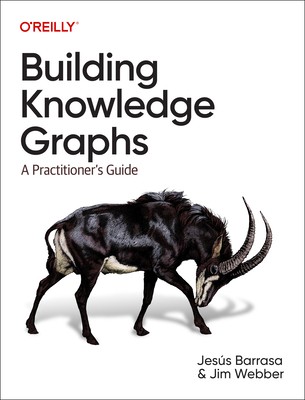
- We will send in 10–14 business days.
- Author: Jesus Barrasa
- Publisher: O'Reilly Media
- ISBN-10: 1098127102
- ISBN-13: 9781098127107
- Format: 17.5 x 23.1 x 2 cm, softcover
- Language: English
- SAVE -10% with code: EXTRA
Reviews
Description
Incredibly useful, knowledge graphs help organizations keep track of medical research, cybersecurity threat intelligence, GDPR compliance, web user engagement, and much more. They do so by saving interlinked descriptions of entities (objects, events, situations, or abstract concepts) while encoding the semantics underlying the terminology. How do you create a knowledge graph? And how do you move it from theory into practice?
Using hands-on examples, this practical book shows data scientists and data practitioners how to build their own custom knowledge graphs. Authors Jesus Barrasa, Maya Natarajan, and Jim Webber from Neo4j illustrate patterns commonly used for building knowledge graphs that solve many of today's pressing problems. You'll quickly discover how these graphs become exponentially more useful as you add more data.
- Learn the organizing principles necessary to build a knowledge graph
- Explore how graph databases serve as a foundation for knowledge graphs
- Understand how to import structured and unstructured data into your graph
- Follow examples to build integration-and-search knowledge graphs
- Understand what pattern detection knowledge graphs help you accomplish
- Explore dependency knowledge graphs through examples
- Use examples of natural language knowledge graphs and chatbots
EXTRA 10 % discount with code: EXTRA
The promotion ends in 17d.22:24:17
The discount code is valid when purchasing from 10 €. Discounts do not stack.
- Author: Jesus Barrasa
- Publisher: O'Reilly Media
- ISBN-10: 1098127102
- ISBN-13: 9781098127107
- Format: 17.5 x 23.1 x 2 cm, softcover
- Language: English English
Incredibly useful, knowledge graphs help organizations keep track of medical research, cybersecurity threat intelligence, GDPR compliance, web user engagement, and much more. They do so by saving interlinked descriptions of entities (objects, events, situations, or abstract concepts) while encoding the semantics underlying the terminology. How do you create a knowledge graph? And how do you move it from theory into practice?
Using hands-on examples, this practical book shows data scientists and data practitioners how to build their own custom knowledge graphs. Authors Jesus Barrasa, Maya Natarajan, and Jim Webber from Neo4j illustrate patterns commonly used for building knowledge graphs that solve many of today's pressing problems. You'll quickly discover how these graphs become exponentially more useful as you add more data.
- Learn the organizing principles necessary to build a knowledge graph
- Explore how graph databases serve as a foundation for knowledge graphs
- Understand how to import structured and unstructured data into your graph
- Follow examples to build integration-and-search knowledge graphs
- Understand what pattern detection knowledge graphs help you accomplish
- Explore dependency knowledge graphs through examples
- Use examples of natural language knowledge graphs and chatbots


Reviews